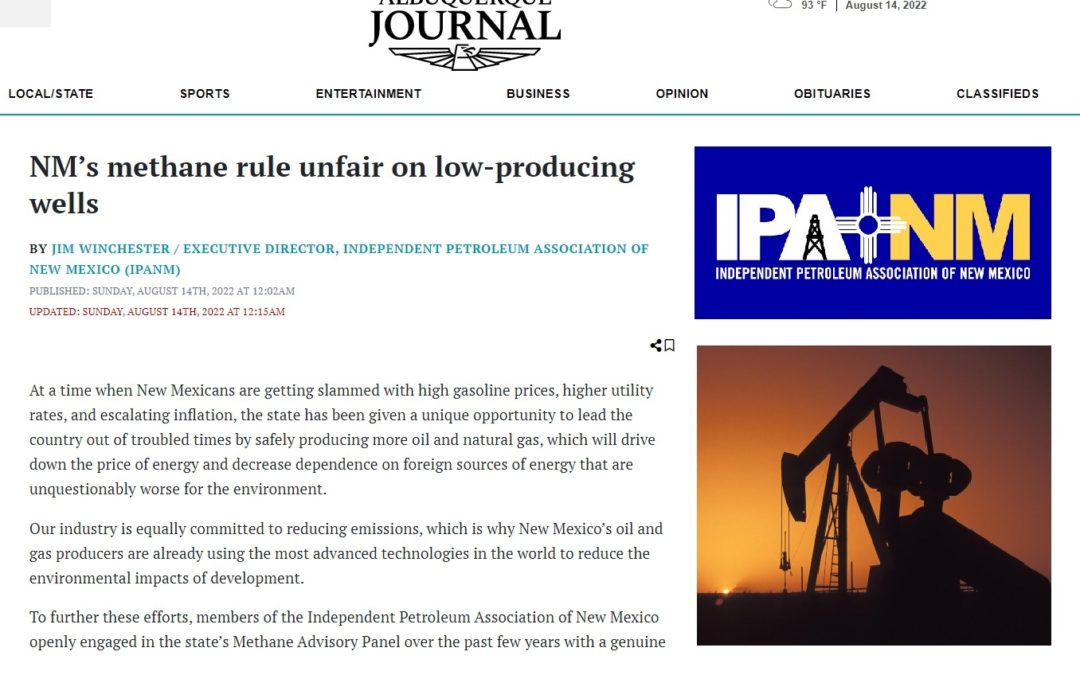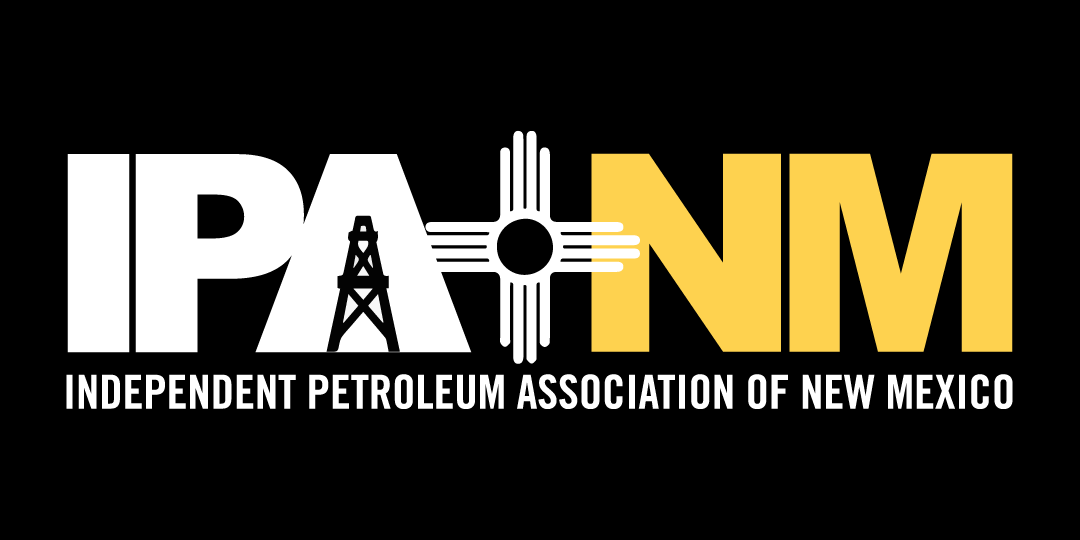IPANM (August 14, 2022) – At a time when New Mexicans are getting slammed with high gasoline prices, higher utility rates, and escalating inflation, the state has been given a unique opportunity to lead the country out of troubled times by safely producing more oil and natural gas, which will drive down the price of energy and decrease dependence on foreign sources of energy that are unquestionably worse for the environment.
Our industry is equally committed to reducing emissions, which is why New Mexico’s oil and gas producers are already using the most advanced technologies in the world to reduce the environmental impacts of development.
To further these efforts, members of the Independent Petroleum Association of New Mexico openly engaged in the state’s Methane Advisory Panel over the past few years with a genuine desire to develop balanced state emissions rules targeting ozone precursors. We worked toward a rule that would not only reduce emissions but also adhere to an early commitment the New Mexico Environment Department made to IPANM to “not create a rule that targets low emitters.”
The Environment Department’s original draft rule released in July of 2020 was supported by IPANM. Though it would certainly increase operating costs, it was crafted to achieve major emission reductions while ensuring operational feasibility for small, independent producers. A key provision in the original draft was an important low-emission exemption to allow low-producing wells to safely operate, as these wells have less potential to emit. But, environmental groups protested and applied considerable pressure on the Environment Department to create “the strictest methane rule in America.”
In May of 2021, the original draft was discarded. The department released a new rule contrived behind closed doors devoid of reason or noble purpose. The administration substituted the low-producing, emissions-based threshold with an exemption scheme cynically designed to never be achieved that will intentionally force at least hundreds, if not thousands, of New Mexico wells to be plugged prematurely. Producers are exempt if they have less than 10 employees and a gross income of less than $250,000 a year. Few, if any, operators will ever qualify. The substituted exemption ignores the already existing New Mexico code which defines small businesses as less than 50 employees. Furthermore, nearly all viable small operators need to generate the gross income threshold annually simply to cover their business costs.
A final most troubling aspect of this rule is the lack of proper modeling tied to the costly upgrades required on existing low-producing, low-emitting wells. The combined rule requirements targeting these wells will have little to no known impact on the reduction of ozone precursors. For the state administration to tinker with the largest economic driver in the state without such consideration is unacceptable.
IPANM has no choice but to appeal the Ozone Precursor Rule. We do so as a last resort after years of good-faith effort on our part to help the state develop a reasonable rule. We sincerely hope the Environment Department will reconsider the adopted rule, hold off on implementation, and re-petition the Environmental Improvement Board to adopt a fair, balanced rule. IPANM supports emissions reductions, but the current rule’s regulatory overreach disproportionately restricts development from small, independent producers.
The Independent Petroleum Association of New Mexico represents hundreds of independent oil and gas operators. Many are small, multigenerational New Mexico-based family operators.


